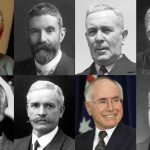Bridging the divide in American politics

Polarization is a scientific term to describe the nature of two magnets that physically repel one another. An invisible force literally pushes polarized objects away from each other.
When discussing polarization in politics this strikes me as an apt metaphor. Polarized politicians repel those in the other party with their behavior.
They push those outside of their “tribe” away with insults, contempt and political sabotage. In a world where we have massive problems (like debt, immigration, healthcare and climate change to name a few) this behavior from our leaders is insanity.
The bad news is that polarization is getting worse. The good news is that we can actually do something about it. Here are 6 ways we can depolarize American politics.
Focus on citizens over elites
Elites have too much political influence. Politicians who focus on what’s best for all citizens, from both parties, rather than a tiny group of elites often find common ground between parties. A candidate who prioritizes raising small donations rather than large donations signals they prioritize regular people over elites.
Change the way Americans vote
We currently elect politicians through winner-take-all voting. The candidate with the most votes wins. Research shows elections become less polarized after adopting something called ranked-choice voting rather than traditional winner-take-all voting.
There is less negative campaigning, higher turnout and higher rates of people reporting they feel like the system is working for them. Ireland, Australia and in the US; Maine, New York City and 23 cities use ranked-choice voting.
End gerrymandering
Gerrymandering is cheating. It’s the party in power unfairly using their power to draw congressional districts in a way that makes it more likely that those in their party get elected. The good news is there is a way to make it fair; appoint a nonpartisan group of experts to draw the districts
Studies show elections become less polarized when this happens. The district becomes more competitive, meaning nearly equal amounts of Republicans and Democrats vote for candidates. This leads to less extreme politicians, on both sides, getting elected.
Bridge, don’t break
Bridging occurs when members of different groups reach beyond their own group to members of other groups to build common ground. It is being respectful to others. It is recognizing the humanity of all people.
Breaking is the opposite of bridging. Breaking is turning against the “outsider” group or the other. Breaking language is insulting, dehumanizing and focused on what makes us different. Studies show that people exposed to bridging language become more open, trusting and flexible in their views while those exposed to breaking language become more combative and closed-minded.
Adopt a win-win mindset
This is understanding a “win” for all is ultimately a better long-term resolution than if only one party gets their way. A win-lose (or “zero-sum” mindset) not only limits creativity by limiting perspectives, but it creates resentment in those who are the “losers”.
When the other party (the “losers”) then take power, they seek retribution. They now want the other party to “lose” as they did, creating a vicious cycle that leads to bad outcomes for regular people. A win-win mindset increases creativity and harmony, leading to better solutions to difficult problems.
Work across the aisle
Politicians who work with the other party the most – co-sponsoring bills together, voting together – are the least polarized candidates. They are often the ones making peace between parties and hammering out the solutions that end up getting passed.
Depolarizing the country should be our top priority. It is the fastest way to achieve a better life for us all. By supporting politicians who exhibit these qualities and support these reforms, we can achieve a post-partisan world where we all are living our best life.
This article was published by Changeroots.
Jake Sandler is an American political activist working to understand how technology, politics and psychology can be employed to encourage integrity and non zero-sum thinking. He is the founder of ChangeRoots.com.











